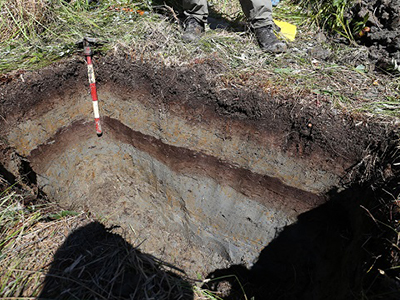By Joe McKendy
January 17, 2018
Traditional knowledge, science and history align on big west coast earthquakes
Prior to the mid-1980s, scientists were not certain that British Columbia had ever seen the kind of massive subduction earthquake that wreaks maximum havoc on land and causes tsunamis.
Thanks in part to oral and written accounts, we now know that such an earthquake took place off the coast of Vancouver Island, rupturing a subduction fault all the way to northern California. What’s more, we can actually pinpoint the date, year and time: January 26, 1700, 9 p.m. Pacific Time.
These sources were key to understanding that massive subduction earthquakes have struck this coast every 250 to 850 years. “We are now 318 years into the cycle, and modern GPS data confirm that energy is being stored that will lead to another such earthquake,” says Dr. John Cassidy, a seismologist with Natural Resources Canada.
Tales from Japan
There are many accounts from Japan in 1700 that refer to an “orphan tsunami,” meaning large waves but no earthquake shaking. “A tsunami struck Kuwagasaki around midnight….water destroyed 13 houses outright and set off fires that destroyed 20 more,” according to one document. The tsunami also caused a shipwreck and damaged rice stores.
Using wave heights and arrival times recorded by the Japanese, tsunami scientists and seismologists worked backward, concluding that the tsunami originated with a magnitude 8.7–9.2 earthquake off the coast of Vancouver Island.
Tales from Vancouver Island

Larger image
Tsunami layers on the west coast of Vancouver Island.
Japanese history aligns perfectly with what we now know about subduction earthquakes and stories that generations of Indigenous people on Vancouver Island have passed on through generations. It’s the story of a coastal village that vanished overnight.
“They had practically no way or time to try to save themselves,” said one storyteller. “I think it was at nighttime that the land shook. I think a big wave smashed into the beach. The Pachena Bay people were lost.”
“It began in the middle of the night, and shaking was so severe that it made people sick,” said another storyteller. “It threw down their houses and brought great masses of rock down from the mountains.”
More evidence, from the trenches
Traditional fieldwork yields more clues. When Natural Resources Canada scientist Dr. Peter Bobrowsky and his colleagues dug trenches along the west coast of Vancouver Island, they found clear evidence of the sudden drop of up to a metre caused by subduction earthquakes. Fragments of wood preserved in the soil tell of coastal marshes destroyed by a tsunami.
In the same fashion, the excavation of a marsh reveals another layer of the exact same plant material, separated by a layer of sand. Tsunamis wash massive amounts of sand ashore, covering a marsh, which slowly builds up again. The deeper they dig, the more layers scientists find.
Both the wood fragments and the marsh plants are situated in time by carbon dating, adding more pieces to the earthquake puzzle. It’s almost like a recording of earthquake history. You get an idea of what occurred and how often. Layers like these appear all along the coast of Vancouver Island, Washington, Oregon and California.
Why earthquake research matters so much
“All of this historical information, combined with our modern seismic and GPS data, informs the national earthquake hazard models used in the current National Building Code of Canada,” says Dr. Cassidy.
“I travelled to Chile after the 2010 magnitude 8.8 subduction earthquake,” he adds. “The damage from the tsunami in many coastal communities was beyond belief. Equally beyond belief was that nearly all residents survived, as they knew what to expect and what to do: go to high ground after the shaking stopped. They had about 15 to 20 minutes to do that.
“For me, it was also very frightening to feel shaking from aftershocks that continued for weeks…sometimes nearly non-stop. It was very heartening to see that modern buildings, designed to modern codes, did extremely well — saving lives and helping to protect communities. This is exactly the goal of our earthquake research and earthquake engineering.”